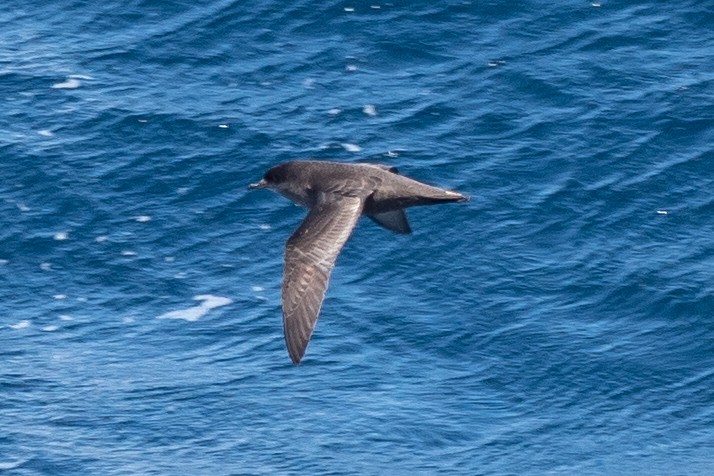White-chinned Petrel
A species of Procellaria Petrels Scientific name : Procellaria aequinoctialis Genus : Procellaria Petrels
White-chinned Petrel, A species of Procellaria Petrels
Botanical name: Procellaria aequinoctialis
Genus: Procellaria Petrels
Content
Description General Info
Description
The white-chinned petrel measures 51–58 cm (20–23 in) in length, weighs 0.97–1.89 kg (2.1–4.2 lb) and spans 134–147 cm (53–58 in) across the wings. Not only is it the largest Procellaria petrel but is also the largest species in its family outside of the giant petrels. This large petrel is sooty-black and has some white on its throat and chin, more so in the Indian Ocean sector than the Atlantic. Its primaries can have a silvery appearance underneath. Its bill may be horn or yellow with a black tip, and also black between the nostrils. It has black feet. When it flies, it mixes slow wing beats with glides. Although normally quiet, it will rattle or groan while at its colony. 
Size
53-56 cm (21-22 in)
Nest Placement
Ground
Feeding Habits
White-chinned Petrel predominantly consumes krill and fish, employing surface seizing and shallow diving as foraging strategies. A unique behavior includes trailing ships for fishery discards, a factor in their susceptibility to longline fishing.
Habitat
The white-chinned Petrel is a marine, pelagic bird that relies on offshore waters, particularly over the continental shelf, and is attracted to areas of convergence and upwelling. It breeds on vegetated slopes and flat, peaty grounds of subantarctic islands. In its broader habitat range, white-chinned Petrel is found from the Antarctic pack ice to subtropical regions, utilizing various islands across this vast expanse during the breeding season.
Dite type
Piscivorous
General Info
Feeding Habits
Bird food type
Species Status
A 2004 estimate placed the adult population at 7,000,000 with an occurrence range of 44,800,000 km (17,300,000 sq mi). Mortality of both adults and chicks due to longline fisheries has caused the IUCN to classify it as vulnerable. An overall decline in population is inferred by a drop in burrow occupancy rates of 28% at Bird Island, and an 86% reduction in population at Prydz Bay. Also, monitoring on Marion Island has shown of 14.5% reduction, and a 37% reduction on the Crozet Islands. Unintentional death at the hands of longline fisheries has proven to be a major contributor to the overall population decline. Nearly all of the bycatch from the Namibian hake are white-chinned petrels. 10% of the South African pelagic longline bycatch and 55% of the demersal. Also, the white-chinned petrel has suffered at the hands of invasive species such as the brown rat, Rattus novegicus, and the black rat, Rattus rattus. Several of the breeding islands are protected areas. Ongoing studies and population monitoring are occurring at South Georgia, the Prince Edward Islands, Kerguelen Islands, and Crozet Islands. Finally, they are a part of ACAP Annex I, and CMS Appendix II. To assist in reversing the decline in population it has been proposed to continue and extend monitoring studies, trying to eliminate most invasive species, promote adoption of best practice mitigation measures at all fisheries within the range via ACAP, FAO, CCAMLR. 
Scientific Classification
Phylum
Chordates Class
Birds Order
Albatrosses and Petrels Family
Shearwaters and petrels Genus
Procellaria Petrels Species
White-chinned Petrel 